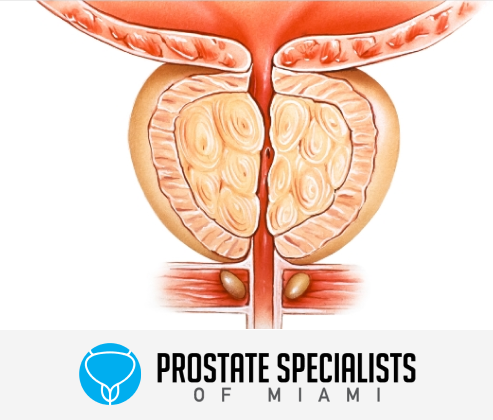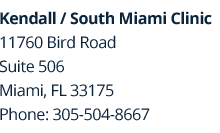What Is the Best Treatment for an Enlarged Prostate?
Prostate Artery Embolization (PAE) is often the best treatment for an enlarged prostate with urinary tract symptoms. Why? It is safe, effective, and minimally invasive, and your interventional radiologist can perform the procedure in the office. Unlike most other options, PAE does not impact sexual function. Because PAE is non-invasive, you can return to normal activities within 24 hours after the procedure.
The Most Common Surgical Procedures for Enlarged Prostates
Among the available surgical procedures to treat an enlarged prostate, the following are the most common:
- TURP (Transurethral Resection of the Prostate): This procedure requires general or spinal anesthesia and a hospital stay of at least one day, sometimes up to three days. You can’t return to strenuous activities for at least three weeks. During the procedure, a surgeon inserts a resectoscope into the urethra to reach the prostate. The resectoscope features a wire with an electric current to heat it. The surgeon uses the wire’s heat to remove excess tissue.
- Greenlight™ Laser Therapy: This laser treatment requires general anesthesia. Your surgeon inserts an endoscope via the urethra, and the laser vaporizes the excess prostate tissue.
- Rezūm™ Water Vapor Therapy: This treatment only requires a local anesthetic. Like other surgical treatments, your surgeon reaches the prostate via the urethra. The instrument used turns water into steam, which creates the energy that removes the excess tissue.
These above options have some adverse effects, including an approximately 15% incidence of erectile dysfunction and a 1-2% incidence of permanent urinary incontinence. Most patients experience retrograde ejaculation at least temporarily after these procedures as well.
- UroLift®: Instead of removing excess prostate tissue, this surgery compresses it via an implant. It requires local anesthesia. Urolift is a safer procedure than the above 3 options in terms of adverse effects, however can not be performed in prostates above 45-50 grams.
Medications
Depending on the severity of the condition, medications can treat enlarged prostates. The most common are alpha-blockers and 5-alpha reductase inhibitors.
- Flomax (Alpha-Blocker): As an alpha-blocker, Flomax will relax the muscles within your bladder and prostate. This, in turn, can make urination easier. Potential side effects of alpha-blockers include dizziness and retrograde ejaculation. The latter is when semen goes backwards into the bladder instead of the penis’s tip; this condition is harmless but can be psychologically upsetting. Flomax and other alpha blockers often only provide slight improvement in symptoms.
- Proscar (5-Alpha Reductase inhibitor): Doctors commonly prescribe 5-alpha reductase inhibitors like Proscar if your prostate enlargement is severe enough that alpha-blockers won’t work. These work by shrinking the prostate by reducing the hormonal production that can cause your prostate to grow. They can also lead to retrograde ejaculation. This class of medications can take six months before the patient experiences improvement.
- Phosphodiesterase inhibitors (Cialis): Mostly know for treatment of erectile dysfunction, Cialis is also becoming more frequently used for relief of BPH symptoms. It is thought to work in a similar fashion to alpha blockers by relaxing smooth muscle cells in the prostate and bladder. As with alpha blockers, slight improvement is commonplace and typically is not useful in patients with severe urinary tract symptoms.
Sometimes, patients get prescribed a combination of the above.
How Prostate Artery Embolization Compares to Common BPH Procedures
PAE is minimally invasive and less risky compared to other treatments for enlarged prostates. You have a lower risk of urinary and sexual incontinence with PAE than with more invasive procedures. PAE appeals to many men because it does not affect sexual performance.
Unlike most other options, PAE offers a quick and virtually pain free recovery. You can resume regular activities, return to work, and resume strenuous activities after just 24-48 hours—a fraction of the recovery time of some alternatives, such as TURP. Most men report no need for any pain relievers during the post-procedure period, although urinary frequency and urgency often worsens for a few days after the procedure.
On top of that, the procedure delivers fast results. Within just three weeks, you should see improvements. Learn more about PAE and if it is right for you at Prostate Specialists of Miami.
What is PAE?


Book An Appoinment
- Your Information Is Safe With Us
Take the 3 Minutes Quiz to Find Out if You Are Eligible for PAE


Frequently Asked Questions
BPH stands for benign prostatic hyperplasia. This is the medical term for an enlarged prostate gland. While enlarged, the gland is not cancerous.
You should seek medical treatment when you start showing signs of BPH. Go to a medical provider immediately if the symptoms are significant. Significant symptoms include blood in the urine, pain in the urinary tract or abdominal area, or painful and frequent urination. You also need to seek immediate medical care if you cannot urinate.
If you don’t seek treatment for BPH, you could develop long-term problems. Because BPH prevents the bladder from fully emptying, you can get urinary tract infections. The condition can also lead to bladder stones, incontinence, and blood in your urine due to an infection. Lastly, urinary retention is a possibility. This occurs when the obstruction is so significant that you cannot urinate.
You can develop a variety of symptoms as a result of an enlarged prostate. First, you might notice that you dribble when you finish urinating. You also might have to get up two or more times in the middle of the night to urinate. It can take longer to start urinating, and the stream might be weak. You also might have to strain to get the urine to come out.
Many men complain of a sudden, overwhelming urge to urinate. Urinating can be painful, and there might be blood in the urine. Eventually, you might become incontinent or lose the ability to urinate.
Dr. Adam Gropper
Dr. Adam Gropper is a board-certified Diagnostic & Interventional Radiologist. Before undertaking his medical training, Dr. Gropper was an engineer at General Dynamics Corporation, working on various projects including cruise missile guidance systems, “Star Wars” strategic defense simulations, and others. He is a lifelong “techie,” and has always been an early adopter and innovator of new technologies in treating vascular problems with minimally invasive approaches.
Dr. Gropper received his M.D. from Emory University, where he also completed his residency and fellowship training in Vascular & Interventional Radiology. He has been practicing in Florida since 1999. He has served as an Associate Professor at FIU Medical School and recently retired from his position as Chief of Radiology at Jackson North Medical Center after 10 years of service.
Why Choose Prostate Specialists of Miami?

- PAE is the least invasive option of all BPH treatments.
- PAE is performed in-office under mild sedation.
- With PAE there are no unwanted sexual side effects.
- PAE offers an easy recovery with most patients experiencing an improvement in symptoms within two to four weeks.
- PAE has a high rate of long-term success.
Real Patients, Real Testimonials
Get Your Life Back Today!
- Your Information Is Safe With Us






